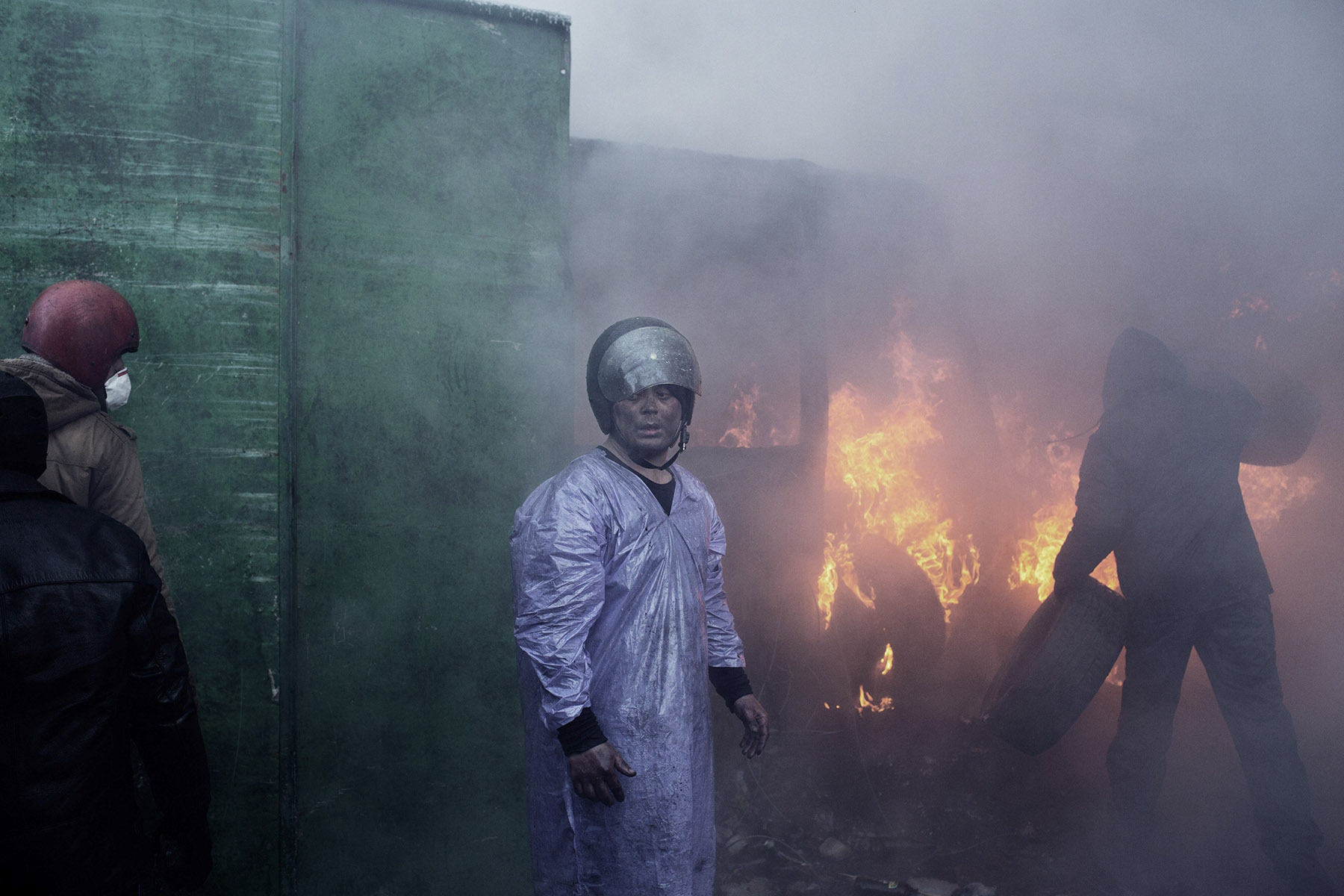
After bubbling for two months, mass demonstrations in Ukraine against President Viktor Yanukovych came to a boil on Jan. 22, when three protesters were killed in clashes with security forces. Behind the violence was a set of antiprotest laws rushed through parliament. Yanukovych had sought to clamp down on popular discontent over his decision to deepen the former Soviet state’s ties with Russia. But the legislation had the opposite effect, triggering fiery confrontations between protesters and phalanxes of riot police that left parts of Kiev, the capital, looking like a war zone.
The latest skirmishes reveal long-standing tensions among Ukraine’s 45 million people over how to orient their country’s economic, foreign-affairs and security policies. Should they look west, forging closer relations with European democracies, or should they embrace their former masters in Moscow? The tensions are reinforced by history, geography and language: Russian is the dominant tongue in the country’s eastern regions, whereas most in the western half speak Ukrainian. They remain unresolved 22 years after Ukraine became independent from the Soviet Union.
The previous government in Kiev, led by President Viktor Yushchenko, had sought to bring the country out of Moscow’s shadow. But that course was reversed after the 2010 elections by Yanukovych, whose power base lies in the eastern regions.
In November, Yanukovych spurned an agreement, years in the making, that would have led to closer trade and political ties with the European Union. Instead, he seized a financial lifeline from Russian President Vladimir Putin: a $15 billion economic package, agreed to in December, that saved Kiev’s cash-strapped government from default. Taking Moscow’s money was also a statement of intent, one that enraged the pro-Europe demonstrators who had already begun to appear in the capital’s streets.
While Yanukovych is standing by his decision to embrace Russia, the recent violence forced him to make some overtures to the protesters, including an offer to install opposition lawmaker Arseniy Yatsenyuk as Prime Minister. The proposals were rejected, with opposition leaders–including former world heavyweight boxing champion Vitali Klitschko–reiterating demands for early elections and a closer relationship with the E.U.
A second set of concessions, which included repealing much of the antiprotest legislation and accepting the resignation of Prime Minister Mykola Azarov, followed on Jan. 28, but these steps are not likely to appease the protesters, especially members of radical right-wing groups.
Photographer Ross McDonnell, who arrived in Kiev on Jan. 23, says the mood on the streets–captured in these searing images–is one of stubborn defiance. “You get the sense that the people won’t be satisfied until the government is toppled,” he says. The escalation in violence has bred a “sense of collectiveness” in the protest camps. “There is a feeling that the movement has come too far at this point to not claim victory.”
–NIKHIL KUMAR
TO SEE MORE PHOTOS BY ROSS MCDONNELL, GO TO lightbox.time.com
More Must-Reads from TIME
- Why Trump’s Message Worked on Latino Men
- What Trump’s Win Could Mean for Housing
- The 100 Must-Read Books of 2024
- Sleep Doctors Share the 1 Tip That’s Changed Their Lives
- Column: Let’s Bring Back Romance
- What It’s Like to Have Long COVID As a Kid
- FX’s Say Nothing Is the Must-Watch Political Thriller of 2024
- Merle Bombardieri Is Helping People Make the Baby Decision
Contact us at letters@time.com